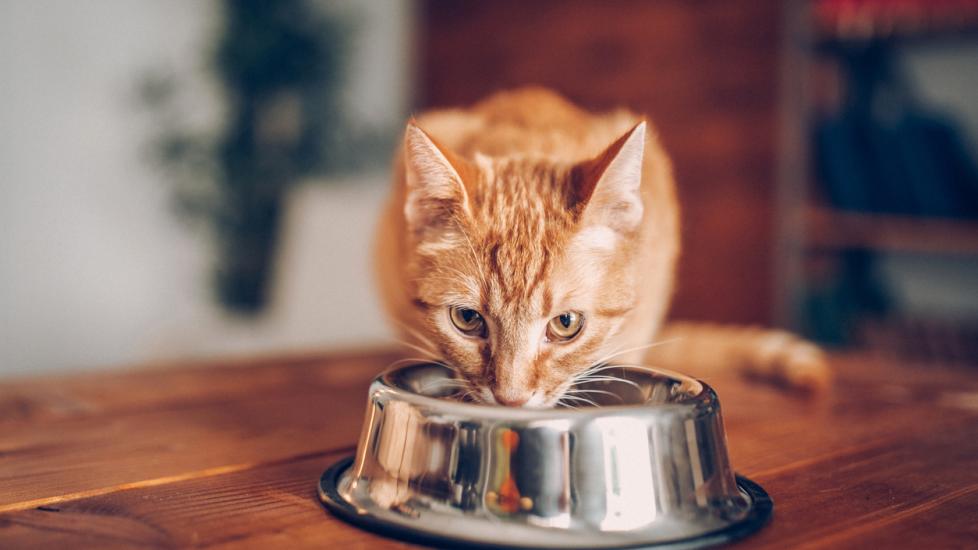Food Allergies in Cats
What Are Food Allergies in Cats?
A food allergy is an adverse reaction that occurs when a cat’s immune system overreacts to a food substance it has previously been exposed to. For a cat to have a food allergy to a specific ingredient, it must have ingested that ingredient in the past.
Food allergies most often affect the skin, causing itching, scratching, overgrooming, secondary infections, and sores. Food allergies can also upset the gastrointestinal tract, causing diarrhea and/or vomiting.
Food allergies are rare cats. It is estimated that just 1% of all cats have food allergies, and up to 15% of itchy cats. Of cats with both itching and gastrointestinal symptoms, up to 42% could be food-allergic. A relationship to age, gender, or breed has not been identified.
Health Tools
Not sure whether to see a vet?
Symptoms of Food Allergies in Cats
The most common symptom with food allergies in cats is constant itching that does not change seasonally.
Symptoms may also include:
-
Licking
-
Scratching
-
Overgrooming
-
Biting
Itching can occur anywhere on the body, but the head and neck are most often involved.
Skin lesions may also be present, which may include:
-
Small crusts (miliary dermatitis)
-
Redness
-
Papules
-
Self-induced trauma (sores due to biting, scratching, or licking)
-
Self-induced hair loss (due to biting, scratching, or licking)
-
Ulcerations
-
Plaques (raised circular nodules)
Less commonly, there may be GI symptoms, including diarrhea and/or vomiting.
Causes of Food Allergies in Cats
Food allergies can develop at any age, even if a cat has been eating the same food for a long period of time with no issues. Most known food allergies are due to an abnormal reaction to proteins in food. Below are some common foods that cause allergies, but food allergies in cats can be caused by any food substance and are not limited these items.
Food sources that most commonly cause food allergies in cats are:
-
Beef
-
Fish
-
Chicken
Food sources that cause food allergies in cats less commonly include:
-
Wheat
-
Corn
-
Dairy
-
Lamb
-
Egg
-
Barley
-
Rabbit
How Veterinarians Diagnose Food Allergies in Cats
The gold standard for diagnosing a food allergy is to feed the cat a strict hypoallergenic diet for 8 to 12 weeks to evaluate for improvement of symptoms. This means that no additional treats, flavored medications, or even certain formulations of medications (gelatin capsules) can be administered.
The food to be considered hypoallergenic for an individual cat will vary depending on previous foods that have been eaten. Ideally, this is a home-cooked diet with a protein source that the cat has never eaten before. There are many factors that make this difficult, and such a diet is not balanced for long-term feeding.
If symptoms improve, the old diet can be reintroduced to see if symptoms return. If they do, the hypoallergenic food should again be fed to the cat. Following this, an individual ingredient can be introduced once every 2 weeks to see if symptoms worsen. If no symptoms occur, the cat is not allergic to this ingredient.
If symptoms do appear within the next 14 days, the cat is allergic to this ingredient and it should be avoided in the future. This is a trial-and-error process to determine specific ingredients a cat may or may not be allergic to.
Alternatively, a novel protein or hydrolyzed diet may be prescribed for the elimination food trial. If improvement is seen, this diet is continued indefinitely. Commercial diets such as these are formulated to be balanced for long-term feeding.
There are many types of tests on the market to diagnose food allergies. These may include collecting blood, hair, or saliva. However, none of these tests have been proven to be accurate in clinical studies.
It is important that you keep a complete diet history to provide the veterinarian monitoring your cat’s response to a hypoallergenic food trial. The choice of food used during the trial will depend on this list. If you use a novel protein diet, your vet will choose a protein source that your cat has never eaten before. Even with hydrolyzed protein diets, it is preferable to choose one that is based on an ingredient to which your cat has not been previously exposed.
Some food-allergic cats who fail to respond to one diet may improve on another diet.
Treatment of Food Allergies in Cats
The treatment for food allergies in cats is to provide a diet that does not contain any allergy-inducing ingredients. The specific food sources you may be able to feed your cat can vary greatly. Prescription diets are recommended when performing a hypoallergenic food trial because they have stricter quality control, while over-the-counter cat food can contain contaminant proteins.
Most cats are very itchy when starting a hypoallergenic food trial, so symptomatic treatment may be necessary. Low-dose corticosteroids, such as prednisolone, are often used for this purpose. Any secondary bacterial or yeast infections must also be treated with antibiotics and/or antifungals, and repeated treatments may be necessary.
Recovery and Management of Food Allergies in Cats
If your cat has a food allergy and is fed an appropriate hypoallergenic food, symptoms can take up to 10 weeks to resolve. It is important to ensure that there are no other food sources available during this time. Food allergies require strict, lifelong dietary management.
Supplements are not recommended for cats with food allergies due to the potential for a reaction to them. They are also unnecessary, because these diets are formulated to be balanced and complete. If symptoms are not controlled by diet change alone, then other causes for the symptoms should be investigated.
Novel Protein Foods for Cats
Hydrolyzed Foods for Cats
Featured Image: iStock.com/eclipse_images
